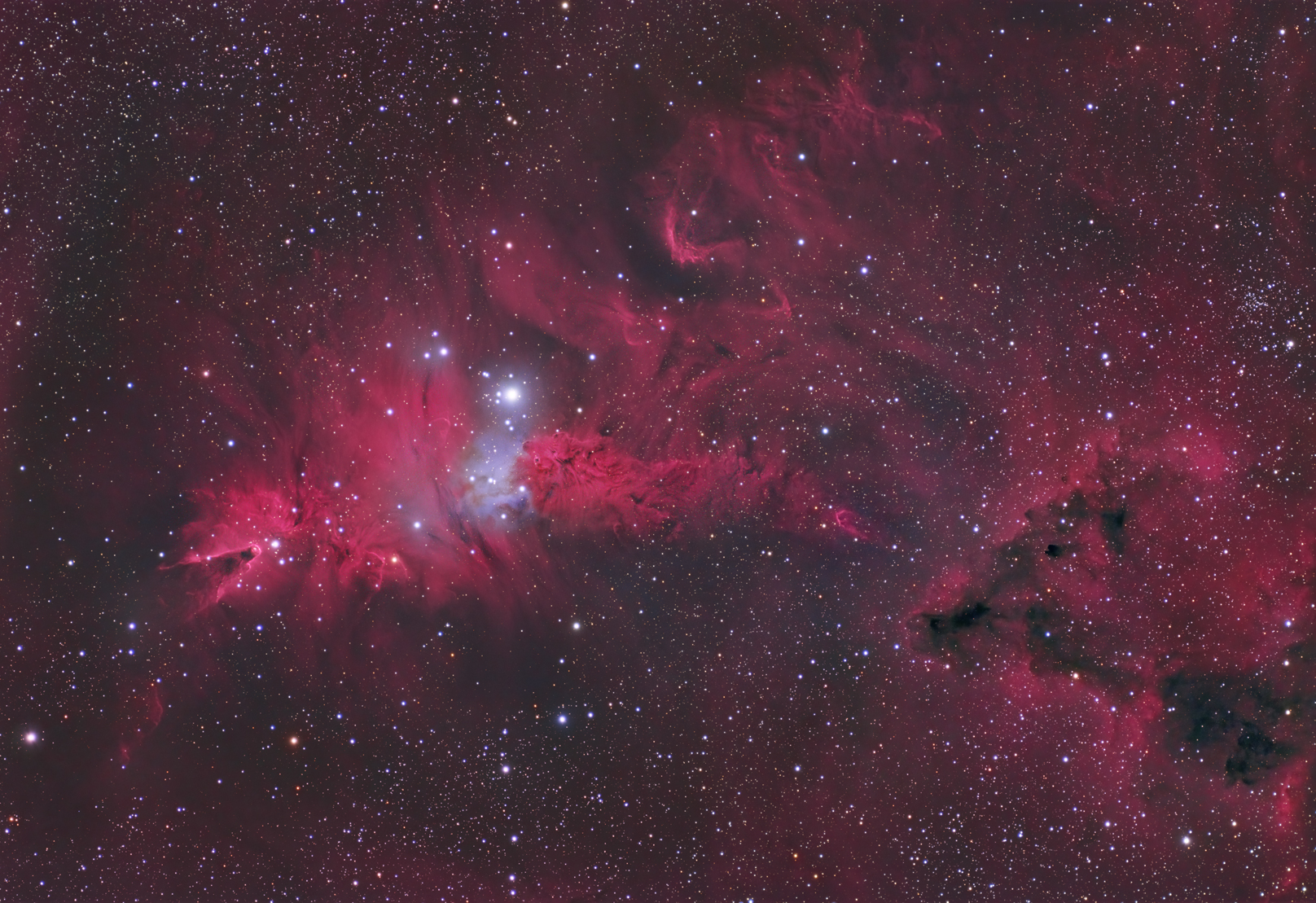Cone Nebula Region
Characteristics:
RA (J2000): 06h 40m 11s
Dec (J2000): +10 degrees 00' 32"
Position Angle: 51 degrees
Description:
The Cone Nebula is the conical
emission
nebula in the lower left corner of the field.
To the right of the Cone region is NGC 2264 a bright
star cluster embedded in the characteristic blue
light of a reflection nebula. NGC
2264 is active star forming area that is part of a larger nebula
complex within
the Monoceros
Loop.
The brightest star within the NGC 2264 group is an O7 class star called
S. Monocerotis,
which is emitting high energy UV irradiation that shapes the
surrounding gas and creates fantastic structures such as the Cone
Nebula itself. Nascent stars
incubating deep within the tip of the Cone Nebula will
slowly emerge millions of years from now, after the dusty shroud of the
Cone has been completely blown away by S. Monocerotis.
Photographic
Details:
Dates: December 12, 18, 19, and 20,
2022.
Scope: Takahashi
FSQ106 at f5 on the Takahashi NJP
Mount.
Autoguider: ASI178 autoguider with SvBony 30mm guidescope, focal length
120mm.
Camera: ZWO ASI294MM at -10C,
with
7 position ZWO filter wheel. Pixel size is 2.3 microns (Bin 1x1),
yielding an image scale with the FSQ (530mm focal length) of 0.90
"/pixel (well matched for my seeing of 3 arcseconds).
Camera gain set to 50 (e-gain
2.13 electrons/ADU), offset 25.
Read noise at this gain level was 2.18 electrons rms.
Filters: Baader
Ha, R, G, B filters; 2 inch.
Image acquisition
software: MaximDL for camera control and autoguiding; CCD
Commander for automation.
Exposures: Total
exposure 16 hours (Ha: 8 hours, 300 second subs; RGB 8 hours, 120
second subs).
Processing:
Calibrated in Maxim; aligned and
stacked in Pixinsight; mild deconvolution and DDP stretch in CCDstack;
all subsequent processing in Photoshop.
Please
note: Graphics on this website may not be reproduced without
author permission.
Back to Nebulae
Home



